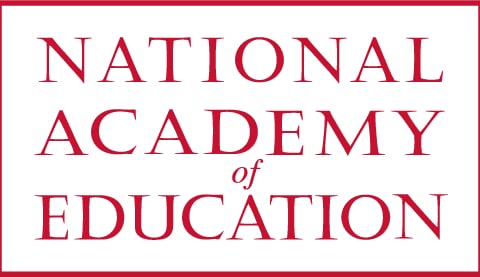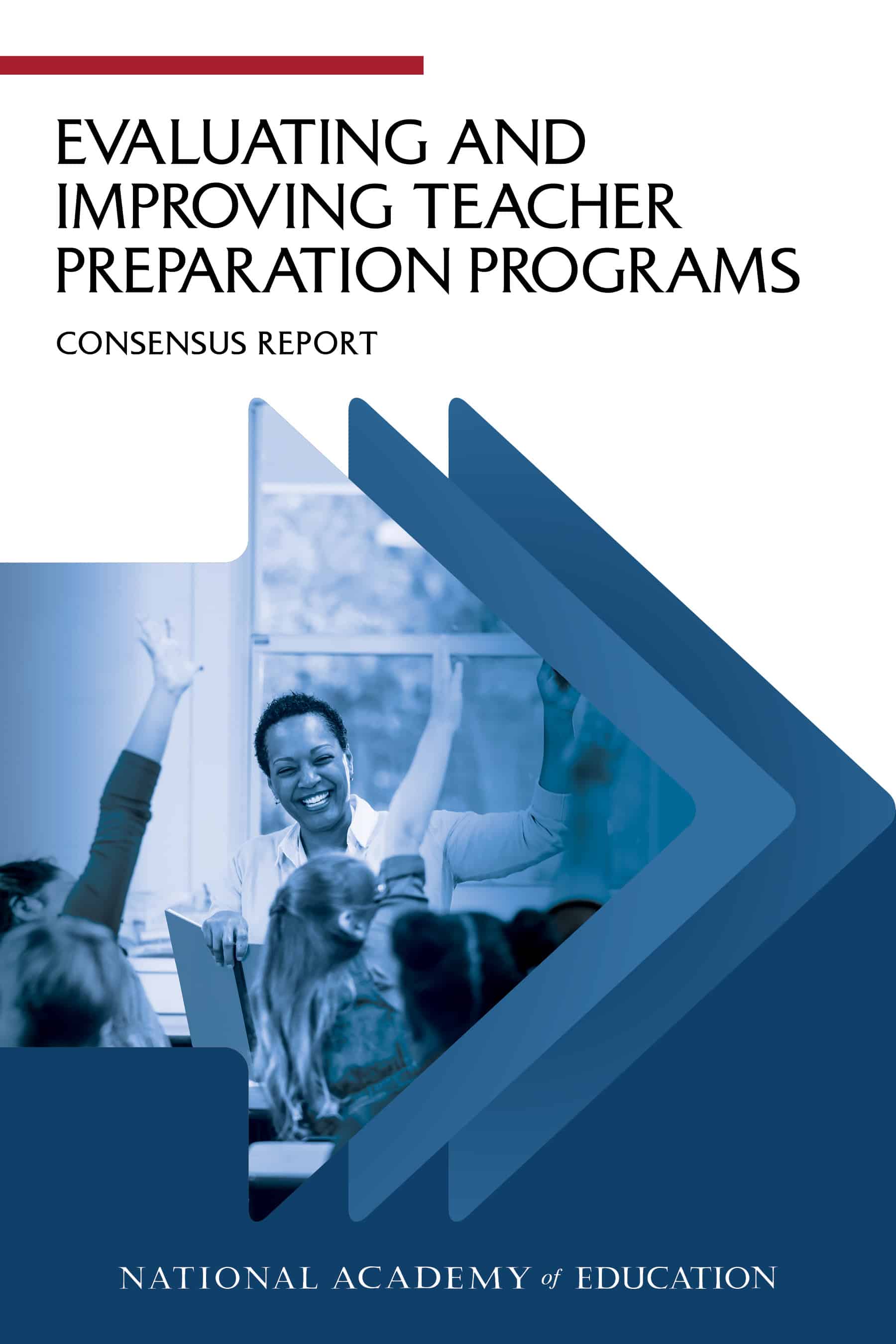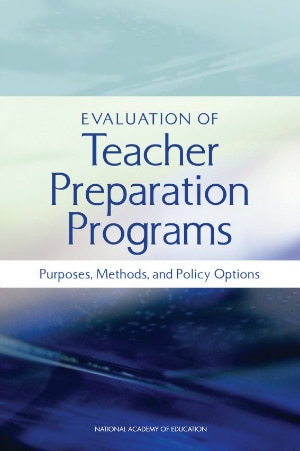Evaluating and Improving Teacher Preparation Programs
OUR WORK
ABOUT THIS PROJECT
Highly qualified teachers who are prepared to teach a diverse student body are not only important but are one of the most necessary components for well-functioning public education. Too many students, however, do not have access to a steady succession of qualified, well-prepared teachers across their years of primary and secondary schooling, and too many teachers have not benefited from a high-quality preparation program followed by support for their continued professional growth.
Understanding these critical goals of developing a high-quality teacher workforce to provide equitable educational opportunities for all students, this NAEd project examines the evaluation and improvement of teacher preparation programs (TPPs) as well as larger social and political policies needed to support such efforts. Guided by an interdisciplinary steering committee of researchers and practitioners in teacher education, the NAEd released a series of project outcomes that aim to inform multiple stakeholder groups including the federal government, state governments, national accreditation agencies, media and other independent organizations, TPPs, and researchers.
A peer-reviewed consensus study report, Evaluating and Improving Teacher Preparation Programs, addresses the interconnectedness between the role of TPPs to both prepare teachers well and the larger policy supports necessary for the nation to meet the critical goal of recruiting, retaining, and equitably distributing a well-qualified workforce. Acknowledging the importance of TPPs to educate teachers, this report provides recommendations to enhance program evaluation to address program improvement. Importantly, given the larger educational context in which TPPs are positioned, this report also provides recommendations for broader reforms to the educational system—including federal and state financial support for teacher education and teacher salaries—that are necessary to support equitable access to high quality teacher preparation for prospective teachers.
Informing the development of the consensus report is a commissioned paper series focusing on key aspects of teacher preparation and evaluation methods that support high-quality preparation and continuous program improvement. The commissioned paper series examines the following eight areas:
Links Among Teacher Preparation, Retention, and Teacher Effectiveness (Matthew Ronfeldt)
Landscape of Teacher Preparation Program Evaluation Policies and Progress (Stafford Hood, Mary Dilworth, & Constance A. Lindsay)
This paper begins with an introduction that provides a review of the teacher preparation program (TPP) evaluation environment during the period of 2013-2020 that has impacted the nation’s view and support for educator preparation programs. It draws attention to public policies, professional and non-profit groups and organizations that frame TPP approaches to teaching and learning. The paper is focused on four key areas primed to leverage equitable TPP evaluation for future program improvement. First, the paper discusses the national and state policy authorities that establish large scale TPP goals and incentives with the power to drive TPP designs and agenda. Second, the paper turns to prominent professional standards setting organizations as well as other groups and individuals that are participants in the TPP evaluation sector with significant influence on framing, creating metrics, and prioritizing what is deemed as fruitful areas for inquiry. Third, the paper discusses the impact of rapidly emerging models that require TPP evaluation criteria tailored for various approaches and standards to be useful to TPPs in their day-to-day work. Lastly, the paper discusses the critical need to re-examine all areas of TPP evaluation so that they capture and employ effective strategies addressing equity and social justice. The paper concludes with recommendations for improved alignment and consistency, timeliness and access, and equity, that may influence TPP evaluation in the future as well as promising strategies for consideration.
Evaluation of Clinical Component of Teacher Education Programs (Etta Hollins & Connor Warner)
The Evolution of Accreditation as Professional Quality Assurance in Teacher Preparation (Steven K. Wojcikiewicz & Susan Kemper Patrick)
In this paper, the authors trace the historical development of professional standards setting and quality assurance processes in teacher preparation. They then examine in depth a set of performance- and outcomes-based measures that have emerged in the past few decades as potential ways to assess TPP effectiveness and to support program improvement. Informed by both lessons learned and an awareness of the evolving contexts related to TPP performance, the authors provide recommendations for how TPP accreditors might more effectively incentivize, support, and provide assurance of teacher preparedness and program effectiveness.
Landscape of Teacher Preparation Programs and Teacher Candidates (Suzanne Wilson & Shannon Kelley)
This paper describes the contemporary teacher preparation landscape and the teacher candidates attending those programs. It begins with a brief overview of the teacher workforce before describing the contemporary landscape of teacher preparation programs (TPPs). The paper then describes what is known about the teacher candidates who attend those programs, including their demographics, academic ability, and motivations to teach. The paper also describes both recent programmatic and policy approaches to recruiting new teacher candidates. Understanding the characteristics of those enrolling in TPPs is essential to program development, evaluation, and improvement. A thorough mapping of the pathways into teaching and the leaky pipeline of those who exit the profession during and after preparation provides researchers and policymakers critical insights into the gaps and opportunities in the TPP landscape. Increasing and diversifying the teacher workforce so that it reflects the diversity of the communities whose children attend school will require attending to local and regional contexts and the needs of specific populations, and conceptualizing teacher candidate recruitment as a process that begins well before individuals pursue teaching as a career and extends into the schools and communities in which they eventually teach. Based on lessons learned from research and program innovations, both recent and historical, the paper provides possible recommendations for attracting and retaining a diverse and talented workforce as well as investing in research on innovations through a pluralistic approach to scholarship.
"Best Practices" for Evaluating Teacher Preparation Programs (Marilyn Cochran-Smith & Emilie M. Reagan)
Teacher Performance Assessments (Charles Peck, Maia Goodman Young, & Wenqi Zhang)
International Insights on Evaluating Teacher Preparation Programs (Mistilina Sato & Jane Abbiss)
This paper provides some international perspectives on quality assurance of teacher education programs through a review of published work and jurisdictional website information. The paper summarizes prior research syntheses on major international comparative studies in teacher education, reviews quality assurance for both accreditation of new programs and ongoing evaluation of existing programs, and reports on common practices that are used across jurisdictions. From these reviews, the paper concludes that teacher education program evaluation is not common practice internationally, but rather is typically taken up through the higher education quality assurance frameworks and practices within jurisdictions. Where there is a specific focus on teacher education program evaluation, there is an increasing emphasis on the use of professional teaching standards and teacher education program review guidelines. Four illustrations of teacher education-specific quality assurance systems (Singapore, Australia, Aotearoa New Zealand, and Finland) demonstrate how the governance of teacher education gives shape to program evaluation policies and practices in context. The paper concludes with four issues for further consideration in global conversations about teacher education evaluation: (1) resources, regulation, and multiple accountabilities; (2) bureaucratization, quality assurance, and continuous improvement; (3) external measures of teacher effectiveness and teacher education program evaluation; and (4) globalization, standardization, and local practice. The summary recommendation is that a critical element in quality improvement is the engagement of teachers and teacher educators in policy formation and evaluation processes.
Finally, this project also re-published the 2013 NAEd report on teacher education as a website that provides interactive, research-driven tools and highlights key information for stakeholders interested in evaluating and improving TPPs.
STEERING COMMITTEE MEMBERS
- Linda Darling-Hammond (Co-Chair)
Learning Policy Institute - Kenneth Zeichner (Co-Chair)
University of Washington - Shari Albright
Raise Your Hand Texas Foundation - Eva Baker
University of California, Los Angeles - Deborah Ball
University of Michigan - Eric Brown
National Education Association
- Robert Floden
Michigan State University - Gloria Ladson-Billings
University of Wisconsin - John Papay
Brown University - Mary Sandy
California Commission on Teacher Credentialing - Marla Ucelli-Kashyap
American Federation of Teachers
CONTACT
Amy Berman, Deputy Director
Dian Dong, Senior Program Officer, Research
Greg White, Executive Director
The project and research is supported by funding from the Bill & Melinda Gates Foundation. The opinions expressed are those of the NAEd and authors and do not represent views of the Bill & Melinda Gates Foundation.



